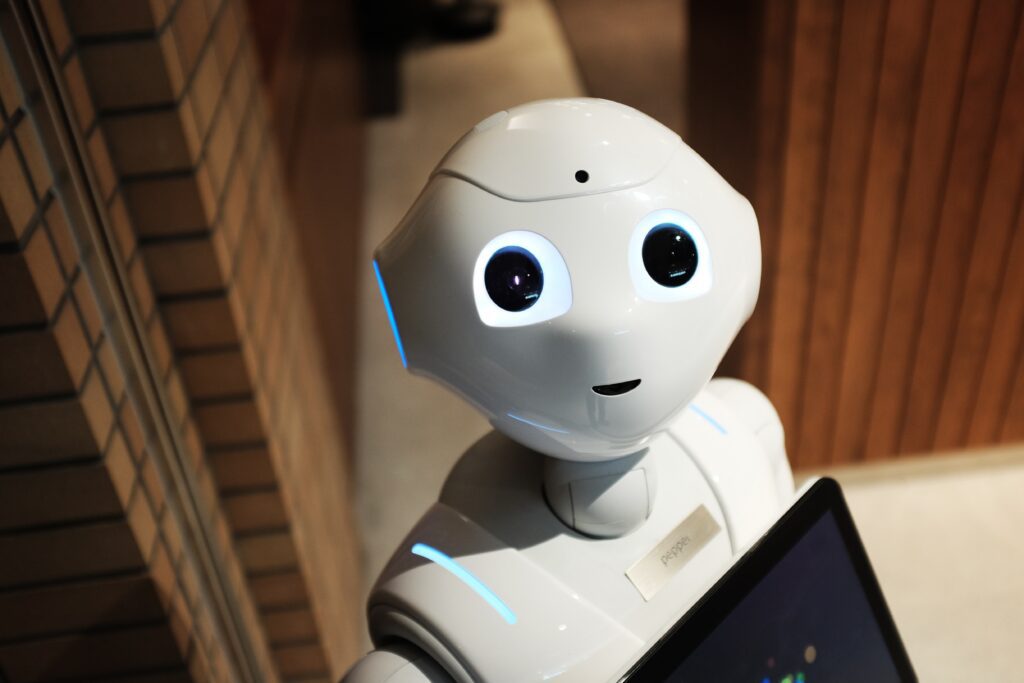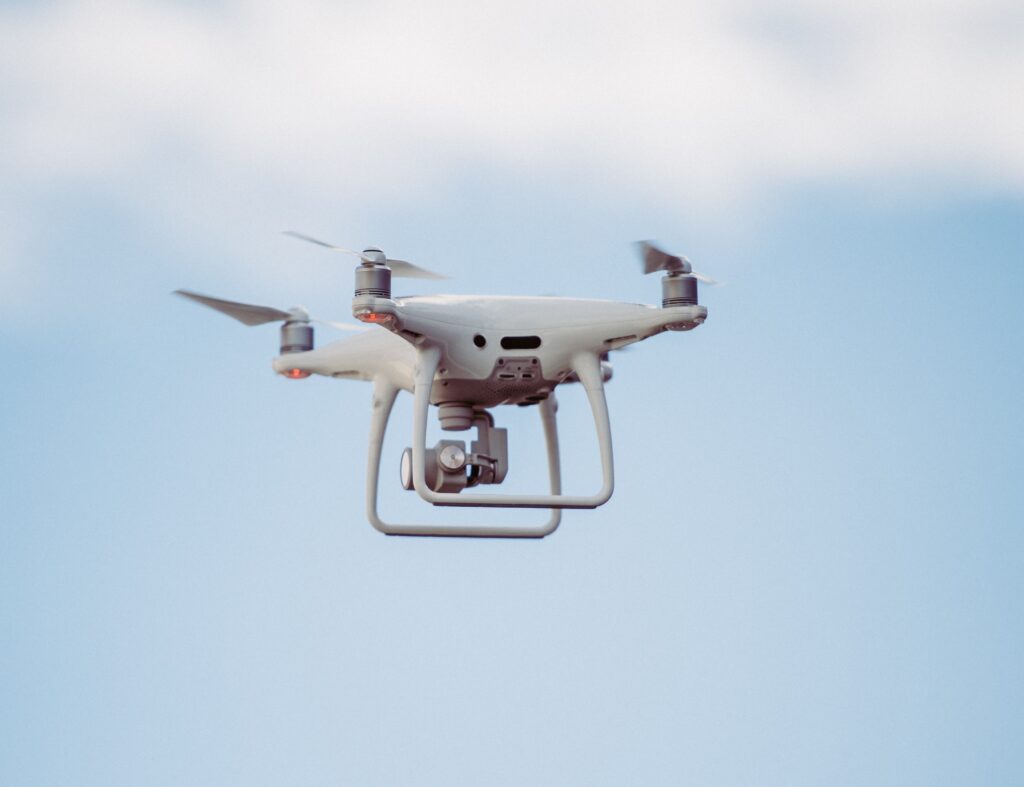In today’s ever-evolving world, security is a top concern for shopping center owners and managers. With people coming and going, it is crucial to have efficient systems in place that can oversee and detect any potential threats. This is where technology comes into play. From advanced surveillance cameras to state-of-the-art alarm systems, technology plays a vital role in enhancing shopping center security. In this article, we will explore the various technological advancements that are making shopping centers safer and more secure than ever before.
Understanding the Need for Increased Security in Shopping Centers
Shopping centers have become a popular destination for people to shop, dine, and enjoy various forms of entertainment. However, with the increase in footfall and the rising threats to security, it has become imperative for shopping centers to prioritize the safety and well-being of their visitors. Understanding the need for increased security in shopping centers involves recognizing the potential risks and their impact on both the customers and the overall economy.
The rising threats to shopping center security
In recent years, there has been a significant increase in security threats faced by shopping centers. These threats include theft, vandalism, terrorism, and even instances of violence. Criminals and individuals with malicious intent often view shopping centers as vulnerable targets due to the large crowds and multiple entry and exit points. As a result, the safety of shoppers, employees, and tenants is at stake, making it crucial to adopt effective security measures.
Importance of providing a safe shopping experience
Creating a safe and secure environment is vital for shopping centers as it directly impacts customer satisfaction and loyalty. When visitors feel safe, they are more likely to spend more time in the center, thereby boosting the sales of retailers and contributing to the overall success of the establishment. Moreover, providing a safe shopping experience encourages customers to return in the future, generates positive word-of-mouth, and attracts new visitors. Therefore, the importance of enhancing security in shopping centers cannot be overstated.
Economic impact of security incidents in shopping centers
Security incidents in shopping centers not only pose a threat to the well-being of individuals but also have a significant economic impact. Theft and vandalism can result in financial losses for retailers and shopping center owners, leading to higher operating costs and potentially affecting the overall profitability of the establishment. Additionally, security incidents can deter potential customers from visiting the center, affecting footfall and revenue. By investing in enhanced security measures, shopping centers can minimize these risks and protect their economic interests.
Traditional Security Measures in Shopping Centers
Shopping centers have traditionally employed various security measures to ensure the safety of their premises. These measures mainly involve the presence of security personnel and the use of manual surveillance techniques.
Role of security personnel
Shopping centers often have dedicated security personnel who are responsible for monitoring the premises, addressing security concerns, and ensuring the safety of visitors and employees. The visibility of security personnel serves as a deterrent to potential criminals and provides a sense of security to the people present in the shopping center. These personnel are trained to respond to emergencies, apprehend suspects, and assist individuals in case of any security-related incidents.
The use of manual surveillance techniques
In addition to security personnel, manual surveillance techniques are commonly employed in shopping centers. This involves the use of security guards stationed at various points throughout the center to visually monitor the premises. They are trained to identify suspicious activities, respond to emergencies, and communicate with other security personnel as needed. This manual surveillance technique plays a vital role in deterring potential threats and maintaining a safe shopping environment.
Limitations of traditional security measures
While traditional security measures have their place in ensuring security, they do have limitations. Human error, fatigue, and the inability to monitor all areas simultaneously are inherent challenges with manual surveillance techniques. Additionally, security personnel alone may not always be sufficient to handle the increasing complexity and sophistication of security threats. Therefore, it is essential to supplement traditional security measures with advanced technological solutions.



This image is property of images.unsplash.com.
Advancements in Security Technology
In recent years, technology has played a significant role in enhancing shopping center security. The development of various security systems has provided an array of options to effectively manage and mitigate security risks.
Brief overview of technological advancements in security systems
Modern security systems have revolutionized how shopping centers approach security. These advancements range from automated threat detection to predictive security measures and real-time updates and alerts. By harnessing the power of technology, shopping centers are better equipped to prevent, monitor, and respond to security incidents effectively.
Different types of modern security technologies
There are various types of modern security technologies that have proven to be successful in enhancing shopping center security. These include surveillance cameras, AI and machine learning systems, biometric technology, Internet of Things (IoT) integration, and even the usage of drones. By adopting and integrating these technologies, shopping centers can significantly enhance their security capabilities and stay ahead of potential threats.
The role of innovation in security technology
Innovation plays a critical role in the development of security technology. The constant drive for improvement and the ability to adapt to evolving security challenges have led to the creation of more advanced and effective security systems. With innovative technologies, shopping centers can better protect their visitors and assets while also streamlining their security processes.
Implementation of Surveillance Cameras
One of the most common security measures in shopping centers is the use of Closed-Circuit Television (CCTV) systems. These surveillance cameras play a crucial role in deterring crime and providing valuable evidence in case of security incidents.
Use of CCTV in shopping centers
CCTV cameras are strategically placed throughout shopping centers to monitor the premises and capture any suspicious activities. Their presence alone acts as a deterrent to potential criminals. The footage recorded by these cameras can also be used for investigations, identifying suspects, and providing evidence in legal proceedings.
Increased security through 360-degree surveillance
Modern surveillance cameras offer 360-degree coverage, ensuring that no blind spots are left unmonitored. This comprehensive surveillance greatly enhances the overall security of shopping centers by providing a complete view of the premises and enabling security personnel to respond promptly to any suspicious activities or emergencies.
Advancements in surveillance camera technology
Surveillance camera technology has come a long way, with advancements such as high-resolution imaging, night vision capabilities, and intelligent video analytics. High-resolution imaging ensures clear and detailed footage, making it easier to identify individuals and incidents accurately. Night vision capabilities empower cameras to capture clear footage even in low-light conditions, enabling surveillance to continue uninterrupted 24/7. Intelligent video analytics help identify specific events or behaviors, such as loitering or abandoned objects, allowing security personnel to respond proactively.
Benefits of a well-monitored CCTV system
A well-monitored CCTV system provides numerous benefits to shopping centers. Firstly, it helps prevent criminal activities by serving as a visible deterrent. Secondly, it assists in detecting and apprehending individuals involved in security incidents, leading to a safer shopping environment. Lastly, the presence of surveillance cameras instills a sense of safety and confidence in visitors, encouraging them to spend more time and money, thus benefiting the shopping center economically.



This image is property of images.unsplash.com.
The Role of AI and Machine Learning in Security
Artificial Intelligence (AI) and Machine Learning (ML) have revolutionized various industries, and security is no exception. By harnessing AI and ML in security systems, shopping centers can significantly enhance their capabilities and stay one step ahead of potential threats.
Introduction to AI and machine learning in security
AI and ML technologies enable security systems to analyze vast amounts of data and identify patterns or anomalies that may indicate potential threats. By learning from these patterns, the systems can become more accurate and efficient in detecting and preventing security incidents. AI and ML also enable automation, reducing the burden on human operators and allowing for real-time threat detection and response.
Automated threat detection
AI and ML systems can automatically detect and analyze suspicious activities in real-time, such as unattended bags, loitering, or unusual behavior. By continuously monitoring the premises, these systems can alert security personnel or trigger preventive measures, significantly reducing response times and potential harm.
Predictive security measures, prevention, and response
One of the most significant advantages of AI and ML in security is their ability to predict and prevent security incidents before they happen. By analyzing historical data and patterns, these systems can anticipate potential threats and enable proactive security measures. For example, if the system detects a pattern of suspicious behavior in a certain area, security personnel can be deployed in advance to prevent any criminal activities.
Real-time security updates and alerts
AI and ML systems can provide real-time updates and alerts to security personnel, enabling them to respond promptly to security incidents or potential threats. These systems can also integrate with other security technologies, such as surveillance cameras or access control systems, to provide a comprehensive security network and ensure a coordinated response.
Usage of Biometric Technology
Biometric technology has gained significant popularity in recent years due to its accuracy and reliability. Shopping centers can leverage different types of biometric technologies to enhance access control and strengthen security measures.
Understanding biometric technology
Biometric technology involves the use of unique physiological or behavioral characteristics to identify and verify individuals. These characteristics can include fingerprints, facial recognition, iris scans, voice recognition, or even gait analysis. Biometrics provide a secure and reliable method of authentication, as these features are inherently difficult to forge or replicate.
Different types of biometric technologies used in shopping centers
Shopping centers can utilize various biometric technologies to enhance security. For example, fingerprint recognition can be used to grant access to restricted areas or verify the identity of individuals during transactions. Facial recognition can be integrated into surveillance systems to identify known criminals or potential threats. Voice recognition can be employed for secure authentication or as a means of communication between security personnel.
Enhanced access control through biometrics
Biometric technology enables shopping centers to implement enhanced access control measures. By replacing traditional access cards or passwords with biometric authentication, the risk of unauthorized access or identity theft is significantly reduced. Biometric systems can accurately identify and grant access to authorized individuals, ensuring that only the right people are allowed in restricted areas.
Benefits and limitations of biometric technology
Biometric technology offers numerous benefits, including increased security, ease of use, and reduced reliance on physical credentials. However, it is essential to address the limitations as well. Biometric systems may face challenges in cases where the biometric feature is unavailable or altered, such as injuries or cosmetic changes. Additionally, privacy concerns related to the storage and use of biometric data need to be carefully addressed to maintain public trust.



This image is property of images.unsplash.com.
Integration of IoT in Shopping Center Security
The Internet of Things (IoT) has transformed the way devices communicate and interact with each other. By integrating IoT in shopping center security, it becomes possible to create a connected and intelligent security network.
The concept of the Internet of Things (IoT) in security
The IoT refers to a system of interconnected devices, sensors, and objects that can collect and exchange data. In the context of shopping center security, IoT enables various security devices and systems to communicate and share information, forming a comprehensive security ecosystem.
Smart devices and their role in surveillance
IoT-enabled smart devices, such as cameras or motion sensors, play a crucial role in enhancing surveillance capabilities. These devices constantly collect and transmit data to a central hub, where analytics can be performed in real-time. By leveraging these smart devices, shopping centers can achieve a more proactive and efficient security strategy.
IoT-enabled access control systems
IoT integration extends to access control systems as well. By connecting access control devices, such as key card readers or biometric scanners, to the IoT network, shopping centers can obtain real-time access data. This enables security personnel to monitor and manage access rights effectively, detect anomalies, and respond to potential security breaches.
Security risks associated with IoT devices
While IoT integration offers significant benefits, it also introduces security risks. The interconnected nature of IoT devices means that a vulnerability in one device can potentially compromise the entire network. It is crucial for shopping centers to implement robust security measures, such as strong encryption and regular updates, to mitigate these risks and ensure the integrity of the IoT-enabled security system.
Impact of Drones in Shopping Center Security
Drones have emerged as a powerful tool in enhancing security measures in various industries. By utilizing drones, shopping centers can expand their surveillance capabilities and gain a unique perspective in monitoring their premises.
Understanding how drones enhance security
Drones provide an aerial view of shopping center premises, enabling security personnel to monitor large areas efficiently. By flying over the premises and capturing high-resolution footage, drones can cover more ground in less time compared to traditional surveillance methods. This allows security personnel to quickly detect and respond to potential security threats.
Facilitating surveillance through drones
Drones offer a versatile and flexible means of surveillance. They can be programmed to follow specific routes or patrol designated areas autonomously. Drones equipped with cameras can capture live video footage or transmit it in real-time to a central monitoring station, providing security personnel with instant visibility and the ability to detect and respond to security incidents as they happen.
Limitations and challenges in using drones for security
While drones offer unique advantages, they are not without limitations. Limited flight time and required battery recharging restrict continuous surveillance. Weather conditions, such as strong winds or rain, can also affect drone operations. Furthermore, drone regulations and airspace restrictions need to be complied with to ensure safe and legal drone usage within shopping centers.
Utilizing Mobile Technology in Security Systems
Mobile technology has transformed the way we communicate and access information. When integrated into security systems, mobile technology offers a convenient and effective means of monitoring, accessing, and responding to security incidents.
Mobile apps for security alerts and updates
Mobile apps can provide security personnel with instant alerts and updates regarding security incidents or potential threats. These apps can be accessed on smartphones or tablets, ensuring that security personnel can react promptly, even if they are mobile or away from a centralized command center. Mobile apps also enable seamless communication and coordination between security personnel, improving response times and effectiveness.
Mobile-enabled access control systems
Mobile technology can be integrated into access control systems, allowing authorized individuals to use their smartphones as access credentials. By utilizing Near Field Communication (NFC) or Bluetooth technology, shopping centers can provide a more convenient and secure access control solution. Mobile-enabled access control systems also offer the advantage of remote access management, minimizing manual administration and enabling a more efficient security process.
Use of mobile technology for real-time surveillance
Mobile devices can be used to access live video feeds from surveillance cameras, allowing security personnel to monitor the premises even when they are not physically present. This real-time surveillance capability ensures that security personnel can detect and respond to security incidents promptly and effectively. By leveraging mobile technology, shopping centers can extend their security reach and enhance their overall surveillance capabilities.
Potential threats to mobile-based security systems
While mobile technology provides numerous benefits to security systems, it is important to address potential threats and vulnerabilities. Mobile devices can be lost or stolen, potentially compromising sensitive security information or granting unauthorized access. The security of mobile apps and the underlying infrastructure must be of utmost importance, with appropriate encryption and security measures in place to mitigate these risks.
The Future of Shopping Center Security
As technology continues to evolve, so does the landscape of shopping center security. It is essential to anticipate emerging trends and constantly update security systems to stay ahead of potential threats.
Emerging trends in security technology
Several emerging trends are likely to shape the future of shopping center security. These include advancements in Artificial Intelligence (AI), facial recognition technology, cloud-based security systems, and the integration of Big Data analytics. By leveraging these trends, shopping centers can enhance their security capabilities and effectively address evolving security challenges.
Expectations for future security measures
Future security measures are expected to be highly interconnected, intelligent, and proactive. Integration between various security technologies, such as biometrics, AI, and IoT, will create a robust and comprehensive security ecosystem. Predictive analytics, combined with real-time monitoring and response, will allow shopping centers to prevent security incidents before they occur, ensuring a safe and secure environment for visitors and employees.
Importance of constantly updating security systems
It is crucial for shopping centers to recognize the importance of constantly updating their security systems. With advancements in technology, potential threats become more sophisticated and require innovative security measures. Regular assessments, upgrades, and maintenance of security systems will ensure that shopping centers remain adequately protected and adaptive to changing security landscapes.
Potential challenges and solutions for future security measures
While the future of shopping center security holds great promise, challenges will inevitably arise. These challenges may include privacy concerns, technological limitations, and the ability to adapt to rapidly evolving threats. By addressing these challenges through open dialogue, collaboration between security professionals and technology providers, and investment in research and development, shopping centers can overcome obstacles and implement effective security solutions.
In conclusion, understanding the need for increased security in shopping centers is crucial. By acknowledging the rising threats, recognizing the importance of a safe shopping experience, and understanding the economic impact of security incidents, shopping centers can prioritize security measures. Traditional security measures, such as security personnel and manual surveillance techniques, have their place but come with limitations. Advancements in security technology, including the implementation of surveillance cameras, AI and machine learning, biometric technology, IoT integration, drones, and mobile technology, offer innovative solutions to enhance shopping center security. By embracing these advancements, shopping centers can create a safe and secure environment for visitors while also adapting to emerging trends and challenges in the future.
